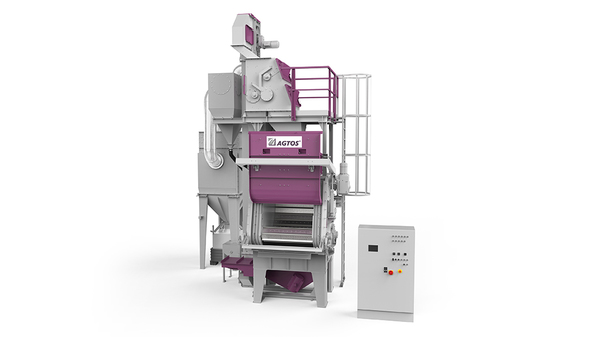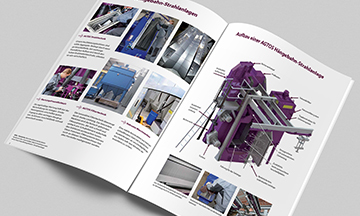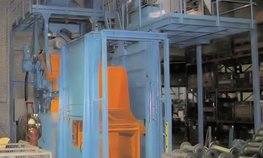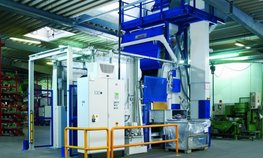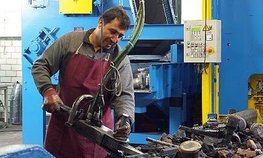Steel mill tumble blast machine
The robust caterpillar belt principle has been established for decades as an effective blasting process for final sanding, descaling, derusting and deburring of heavy or sharp-edged mass-produced parts. These machines are frequently found in foundries and forges. The caterpillar belt plates are bolted onto chain links and connected with appropriate connecting elements. The workpieces to be blasted are exposed to the centrifugal blast by the moving caterpillar belt during the entire blasting time and are thus continuously processed.
The machine can be loaded and unloaded in different ways: In automatic mode, the machine is loaded with feeders and unloaded by dumping the parts onto a discharge chute.
Crawler belt blast machines Product programme
Our standard programme for bead blast machines (MR) includes various filling volumes.
| Technical data | MR 0350 | MR 0550 | MR 0750 | MR 0850 |
|---|---|---|---|---|
| ⌀ Blasting chamber (mm) | 1000 | 1200 | 1200 | 1400 |
| Width of blasting chamber (mm) | 1200 | 1200 | 1600 | 1600 |
| Batch (I) | 350 | 550 | 750 | 850 |
| Batch (kg) | 1250 | 1500 | 1500 | 2500 |
| max. individual workpiece weight (kg) | 50 | 100 | 100 | 150 |
| turbines | 2 x 15 kW or 1 x 22 kW or 1 x 30 kW | 2 x 15 kW or 1 x 22 kW or 1 x 30 kW | 2 x 22 kW or 2 x 30 kW | 2 x 22 kW or 2 x 30 kW |
The machine selection is based on the volume and weight of the batch to be blasted. The workpiece parameters to be blasted, such as geometry, material and temperature of the workpieces, must also be taken into account.
Please send us your detailed enquiry.
Our experienced team will be happy to help you.
Operating sequence for tracked belt blast machines
The workpieces are loaded directly into the blasting machine in containers, on pallets or in the so-called bucket loader. The workpieces slide through the open loading door into the caterpillar belt, which is already rotating forwards.
The feeder then returns to its starting position. Once the door is automatically closed and secured against opening, the blasting process begins. After the blasting time has elapsed, the door opens automatically and the finished blasted batch is discharged in cycles via the discharge chute or directly into the customer's containers.
The abrasive is kept in circulation and cleaned for continuous use. The cleaned abrasive is fed from the abrasive hopper to the high-performance turbine via the abrasive dosing unit.
A fan generates the necessary negative pressure to ensure dust-free operation of the blasting system. The extracted air is cleaned with a filter system.

